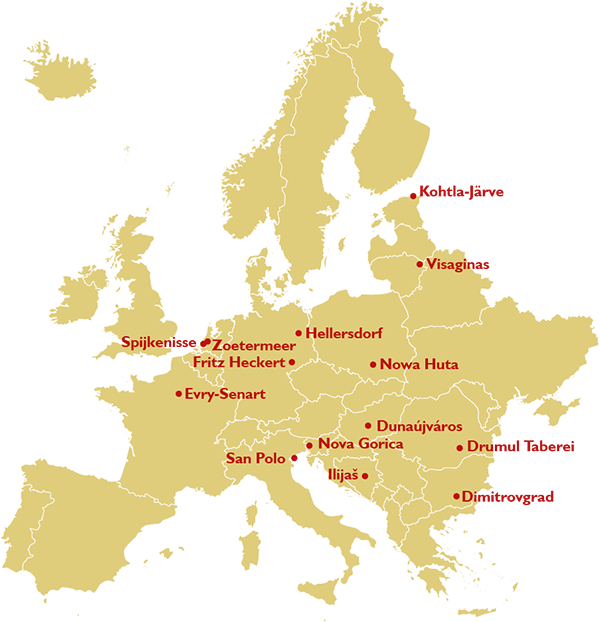In 1883, Chemnitz became a city with over 100,000 residents, and just 30 years later this figure had risen to 320,000. However, the city was subject to heavy allied bombing during World War II, destroying key industries in oil and 6 automobile manufacturing. Post-war, modest low rise housing was constructed in the now Soviet occupied East Germany. In 1952, the GDR established the city of Karl-Marx-Stad as an idealist socialist city. Modern Plattenbau buildings were prioritised over the preservation of older historic ones, resulting in many of them falling into disrepair and even dereliction. The town continued to be a prominent player in machine construction up until the 1990’s.

In 1990 the town was renamed Cheminitz and a re-planning of the city was ordered while East Germany suffered from mass migration to the west. Shopping facilities on its peripheries were constructed to compete with West German cities. Hundreds of partially historic buildings were levelled to facilitate the revamp. Now, much of the centre has been restored and its 244,000 residents eagerly await becoming European Capital of Culture 2025 (ECOC). The Fritz Heckert residential area, named after the politician of the German Communist Party of Chemnitz Fritz Heckert, is a prefabricated housing estate in Chemnitz, It was the third largest, and at times the second largest, new housing estate in the GDR.
From 1974 onwards, flats were built in large panel construction in the districts of Helbersdorf, Markersdorf and Kappel, where almost 90,000 people lived in 1990. After reunification, prefabricated housing estates quickly lost their appeal throughout the former GDR and many residents moved out. A high vacancy rate was the result, so that in 1998 the demolition and remodelling began. Entire rows of houses disappeared, to make way for small detached houses. In addition, some of the higher building units were shortened to fewer storeys. In 2004, just over 43,000 Chemnitz residents still lived in the “Heckert”. The remaining substance has been and is being renovated to improve the quality of living.
Representative Organisation:
Chemnitz 2025
Institut für Ostmoderne




